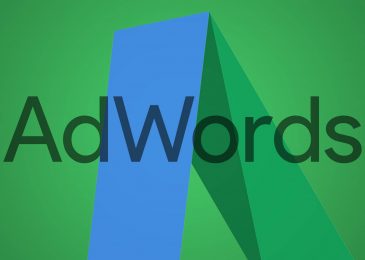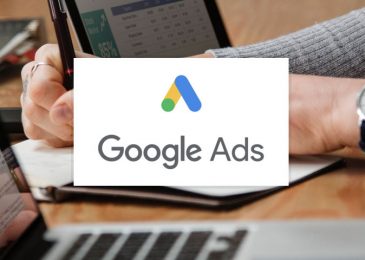Instead of building all of your paid campaigns around your most profitable keywords, and focusing all of your time/energy trying to convert your sales qualified leads, maybe it’s time you focus your optimization efforts elsewhere.
1. Targeting Early-Stage Queries for Early-Stage Buyers
So what is the difference between an SQL searching for “construction management software” and an early-stage buyer typing the same query into the search bar?
The answer is simple – what makes them different are the questions they are asking (and the benefits they are looking for when they land on your page).
Try to step into the shoes of the different users who might land on your page. Or, better yet, look at the actual questions they are typing into the search bar to find you.
Plugging Product/Service Keywords into Answer the Public

Answer the Public is a great tool for advanced keyword research because it delivers keywords in the form of questions, revealing what kind of help your prospects are looking for.
Not only that, it prioritizes them around the primary interrogative terms: “who, what, when, where, why, how,” with search volume to boot!

You can comb through the different diagrams (or lists if you prefer the linear presentation option) and start to identify the questions that different stage buyers are asking.
For example, first time preliminary research users might ask questions like:
- What is construction management software?
- Why use construction management software?
While more sales qualified leads, lower down your funnel, would ask questions like:
- Where to purchase construction management software?
- Construction management software for sub contractors
- Which construction software is the most compatible with…?
Once you’ve identified the different questions you can use to target early-stage buyers as opposed to SQLs, you can start building new campaigns with ad groups built around early-stage keywords.
This will include writing (or rewriting) landing page copy to directly answer questions with more preliminary benefits and drive cooler, lower-friction conversions.
If you really want to supercharge how you target your keywords, you can combine a host of different keyword tools like SEMRush, Moz, Answer the Public, and LongTail Pro to pin down search context, intent, ranking, and page priority as well. (Check out Directive’s Action Item Episode 1 to learn how how to supercharge your keyword research with these tools.)
But, for now, we’re focused on early-stage buyers.
So, having identified what questions they are typing into the search bar, let’s look at what Google is showing your users in suggested search.
2. Identifying Search Context with “the Wildcard”
The Wildcard is a trick you can use to identify what Google is showing users in suggested search.
It’s really just an underscore ( _ ) typed into the search bar either before or after the keyword you are researching.


As you can see in the images above, the wildcard will show you the top three suggested searches that Google provides users when they type in the given keyword.
This is a really helpful tool because other tools like Moz Keyword Explorer often have “no search volume” for these modified search queries.
But, as the wildcard shows, there is search volume for those modifications.
You can build targeted ad groups around these modifications as well to really broaden the top of your sales funnel. The more early-stage buyers you can convert into top-of-the-funnel leads, the wider your pipeline is going to be.
(Of course filling up that pipeline up is going to take some leg work of its own, but that’s a post for another day.)
3. Building SKAGs Around User Queries
KlientBoost’s CEO Jonathan Dane says it best: “You don’t have to be an AdWords lover to understand the value of slicing up your AdWords account in a more granular way, to make it more manageable, and, to have it perform much better.”
And again, the reason behind their success is rather straightforward. The more granular control you have over discrete, targeted campaigns, the more effective each campaign will be.
So, instead of dumping somewhat relevant keywords into a single ad group with dynamic keyword insertion in the headlines, build out single keyword ad groups (SKAGs) that unlock the ability to match words and search intention throughout your ad, ad extensions, sitelink extensions, landing page, and CTA.
Setting Up SKAGs with Product/Service Keywords
Consider the following – an early-stage searcher types a keyword into the search bar and finds your ad. That ad your user is viewing is built from a dynamic keyword insertion ad campaign, originally built for “construction management software” but including the related search term “construction management services.”
Because they searched for the latter, the ad is now showing that user your ad copy for your “services” and not the software you are trying to market as a SaaS business.
And because you are using a dynamic text insertion setup, your headline term “software” is now being replaced with “services,” and your user has no idea you are marketing an actual purchasable product to streamline their business.
Didn’t work quite as well as you’d hoped, did it?

Now let’s look at the same search interaction, streamlined through a SKAG ad instead.
The user searches “construction management services,” for which you have built out the following unique and discrete ad campaign features:
- SKAG built around the early-stage search term “construction management services”
- Unique ad that targets the “construction management services” search context (that specific long-tail keyword)
- Nuanced ad copy that connects “services” to “software”
- A well-built landing page that relates your different “software services”
- A singular conversion goal, ideally for a cooler lead, that will bring them back to your domain searching in a more educated context, looking for “software” in the future
SKAGs also allow you to repeat those specific keyword instances through your headline, link, and ad description, where the keywords will be bolded to emphasize their relevance to the searcher. In DKIs, you are only addressing keyword usage in the headline.
Building out targeted and streamlined campaigns around SKAGs may take a bit more leg work, but the results are clear.
The more granular your control, the more effective your targeting efforts will be.

4. Increasing Your CTR with Benefits-Focused Ads
If you really want to improve the success of your ads, you can jam pack them with benefits instead of branding information.
This, as with most optimization efforts, will take into account the different stage buyers you are targeting in each of your SKAG campaigns.
By dropping your brand name from your headline, you free up space in your copy for enticing callouts to inspire more clicks.
For example, at Directive Consulting, we dropped our brand name from our ads and used copy in parentheses to show users the real beneficial value to clicking through.

Make sure that you target your different parenthetical “sneak-peaks” to the given user lead-level you are targeting. So, for an early-stage buyer that you are targeting with educational content, you might want to use one of the below examples of parenthetical callouts:
- (Check Out Our Reviews!)
- (Case Studies to Prove it!)
- (Trusted Throughout the Industry)
But for a more conversion-ready user looking at a more SQL-oriented ad, you might try some of these:
- (Cheapest Prices Around!)
- (Comparison Pricing Models)
- (Shave 2 Hours off Implementation!)
5. Leveraging Sitelink Extensions and Mini Landing Pages
While we are on the topic of optimizing your use of space on the SERP – sitelink extensions are another huge optimization opportunity for your paid ads.

Sitelink Extensions are a great way to fit more of your service or product pages onto a single SERP result.
This way you don’t need to do all of the technical SEO leg work to get each individual page onto the SERP – you can capitalize on your already successful ad links and make the most of your page 1 real-estate instead.
However, an important rule to remember is that each discrete page within your sitelink extension needs to be at least 80% unique content and copy, which can make listing all of your best performing product pages difficult if they are all within the same sub menu of your product lists.
Taking the Next Step with Targeted Sitelink Extensions
This is where Answer the Public and knowing how to use the Wildcard can really come in handy.
If you can identify the different related products or services that the fringe of your traffic are looking for, you can beef up the sitelink extensions of your top service pages with the remaining top performers.
For example, Answer the Public shows us that when searching for “construction management” users are also looking for “software for builders,” “software for general contractors,” “managing sub contractors,” and more.
These are the search queries you can directly answer in your site extensions to pick up the fringes of your early-stage buyers interested in related services.
Essentially, these sitelinks will become a resource hub for early-stage buyers to view your most profitable product/service pages all in one ad on the SERP. All of your best pages all efficiently stacked for your information-hungry user.
On top of the increase in the quality of links you are providing the user, you can also get a heap of new data from these sitelinks. Tracking which of the links generates the most clicks, you can adjust your primary CTA to account for your most successful pages.
Read more : All the best knowledge of PPC budgets and bids
_______________________________________________________________________________
For more details about our seo service packages, pls contact us
BIGBIGSEO Team
Email: bigbigseo@gmail.com
Skype: bigbigseo
https://www.facebook.com/bigbigseo
Thank you!




